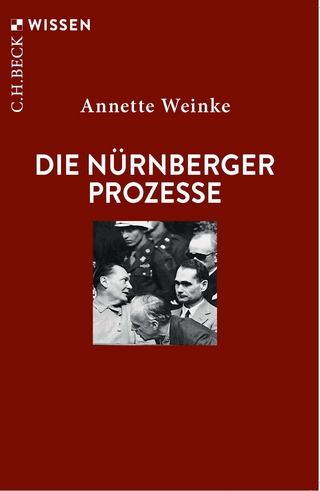
Hers, His, and Theirs
Community Property Law in Spain and Early Texas
Seiten
2005
Texas Tech Press,U.S. (Verlag)
978-0-89672-560-7 (ISBN)
Texas Tech Press,U.S. (Verlag)
978-0-89672-560-7 (ISBN)
In the Texas Republic, Spanish law came to be seen as more equitable than English common law in certain areas, especially womens rights, and some Spanish traditions were adopted into Texas law. This title explores the evolution of Castilian law during the Spanish Reconquest and how those laws came to the New World and Texas.
'In the mid-1700s, in the tiny villa of San Fernando de Bxar, on the northern fringes of the Spanish Empire in North America, Hispanic women had legal rights that would have astonished their British counterparts half a continent to the east. Under Spanish law, even in the sparsely settled land that would one day become Texas, married women could own property in their own names. They could control and manage not only their own property but even that of their husbands. And if their property rights were infringed, they could seek redress in the courts' - from the Introduction. In the Texas Republic, Spanish law came to be seen as more equitable than English common law in certain areas, especially womens rights, and some Spanish traditions were adopted into Texas law. Upon statehood, traditions in community property and womens legal status were written into the state constitution. Through legal battles, documents, and court cases, ""Hers, His, and Theirs"" explores the evolution of Castilian law during the Spanish Reconquest and how those laws came to the New World and Texas. Jean A. Stuntz looks carefully at why the Spanish legal system developed so differently from any other European system and why it survived in Texas even after settlement by Anglos in the 1830s. She discusses what this system of community property offered that English common law did not and why this aspect of married womens property rights has not been well studied. Jean A. Stuntz teaches Texas and Spanish borderlands history at West Texas A&M University, in Canyon. Formerly a practicing attorney, she now specializes in womens history of the Southwest.
'In the mid-1700s, in the tiny villa of San Fernando de Bxar, on the northern fringes of the Spanish Empire in North America, Hispanic women had legal rights that would have astonished their British counterparts half a continent to the east. Under Spanish law, even in the sparsely settled land that would one day become Texas, married women could own property in their own names. They could control and manage not only their own property but even that of their husbands. And if their property rights were infringed, they could seek redress in the courts' - from the Introduction. In the Texas Republic, Spanish law came to be seen as more equitable than English common law in certain areas, especially womens rights, and some Spanish traditions were adopted into Texas law. Upon statehood, traditions in community property and womens legal status were written into the state constitution. Through legal battles, documents, and court cases, ""Hers, His, and Theirs"" explores the evolution of Castilian law during the Spanish Reconquest and how those laws came to the New World and Texas. Jean A. Stuntz looks carefully at why the Spanish legal system developed so differently from any other European system and why it survived in Texas even after settlement by Anglos in the 1830s. She discusses what this system of community property offered that English common law did not and why this aspect of married womens property rights has not been well studied. Jean A. Stuntz teaches Texas and Spanish borderlands history at West Texas A&M University, in Canyon. Formerly a practicing attorney, she now specializes in womens history of the Southwest.
Jean A. Stuntz teaches Texas and Spanish borderlands history at West Texas A&M University, in Canyon. Formerly a practicing attorney, she now specializes in women s history of the Southwest."
The Development of Spain and of Castilian Law Las Siete Partidas Family Law in the Partidas The Transfer of Castilian Laws to New Spain The Spanish Legal System Arrives in Texas Women's Status in Case Law from San Fernando de Bexar The Impact of English History on the Development of English Common Law The Application of Spanish and English Laws to Anglo-American Settlers in Mexican Texas The Creation of the Republic of Texas and Its Legal System The State of Texas and Its Legal System
| Erscheint lt. Verlag | 15.11.2005 |
|---|---|
| Vorwort | Caroline Castillo Crimm |
| Zusatzinfo | 6 maps |
| Verlagsort | Texas |
| Sprache | englisch |
| Themenwelt | Geschichte ► Teilgebiete der Geschichte ► Militärgeschichte |
| Recht / Steuern ► EU / Internationales Recht | |
| Recht / Steuern ► Privatrecht / Bürgerliches Recht ► Sachenrecht | |
| Recht / Steuern ► Rechtsgeschichte | |
| ISBN-10 | 0-89672-560-X / 089672560X |
| ISBN-13 | 978-0-89672-560-7 / 9780896725607 |
| Zustand | Neuware |
| Haben Sie eine Frage zum Produkt? |
Mehr entdecken
aus dem Bereich
aus dem Bereich
neueste Manipulationstechniken als Waffengattung der NATO
Buch | Softcover (2023)
Westend (Verlag)
24,00 €
Deutschlands Schwäche in der Zeitenwende
Buch | Softcover (2023)
C.H.Beck (Verlag)
18,00 €


